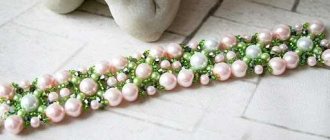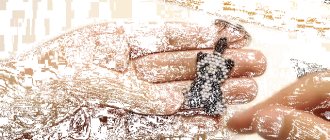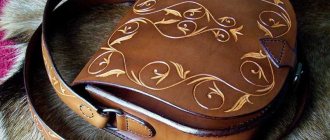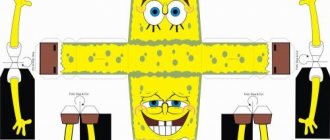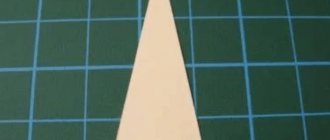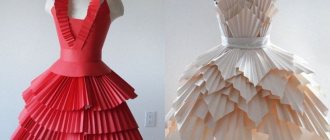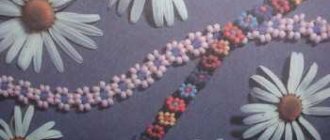Beads
The material is used to make accessories and jewelry. Bead embroidery has been widely popular for centuries. Types of decorative material:
- brocade;
- pouring;
- opaque;
- metal;
- Klinsky;
- marble;
- fibrous;
- bugles;
- "chameleon".
There are other classifications. For example, Czech. The history of beadwork begins in Egypt, the birthplace of glassmaking, without which this type of needlework would not have become so widespread.
Where to store?
In order not to get confused in the variety of materials and tools, you should provide a special place and devices for storing them.
Jars
It is best to store beads in transparent, tightly closed jars, which can be conveniently placed in a special bag or cosmetic bag.
Casket
The section of the box is perfect for storing all the accessories.
Organizer
It is convenient to store beading tools in a special organizer.
Antiquity
On the territory of modern Egypt in the 20th century, archaeologists discovered faience jewelry. A variety of accessories and household items were found here, made using a technology reminiscent of modern beadwork. The history of glassmaking goes back about six thousand years. The material from which today handicrafts around the world create bracelets, earrings and necklaces is also approximately the same age.
The first machine for making beads appeared in the middle of the 19th century. Decorative elements immediately dropped in price. In the 17th and 18th centuries, the ladies' toilet was decorated with handmade glass beads - round transparent elements cut with a vertical disk. Today, bead making uses a die-cutting press that resembles a guillotine.
In Ancient Egypt, a material vaguely reminiscent of glass beads was called “busra”. Translated into Russian – “fake pearls”. In ancient times, bead bracelets were made using very complex technology. It’s unlikely that today’s needlewomen have enough patience to process each bead. This kind of work is akin to jewelry. In Ancient Egypt, beads were simple and colorless. The craftsmen had to work hard to give their products shine and luxury.
Middle Ages
Researchers associate the emergence of beadwork with ancient Egyptian culture. But outside the country of the pharaohs, there were also craftsmen who were capable of turning small glass parts into amazingly beautiful accessories, dishes and paintings. Beading technology was also known to the Romans. In the Middle Ages, this type of art developed in Italy, Spain, and France.
In the 13th century, Venice became the capital of beadwork. The best glassmakers lived in the most romantic and mysterious European city, which at that time was a republic. The Czech Republic took the baton. “Bohemian glass” is an expression that every person has heard at least once in their life.
Crystal, glass, colored beads, and bugles were produced in the Czech Republic. Until the beginning of the 18th century, Bohemian craftsmen jealously guarded the secrets of the art of making decorative materials. By the middle of the 19th century, their secrecy ceased to intrigue foreign colleagues: special equipment was invented, and this event opened a new page in the history of beading.
In Russia
The first glassmakers appeared in the early Middle Ages. Jewelry and beadwork gained popularity in the 16th century. Peter I invited famous German and Dutch glassmakers to Russia. He actively sent his own artisans abroad for training.
Lomonosov, being a meticulous and passionate person, founded a laboratory in which there were several furnaces for creating glass products. The material was used to make glass beads used in decorative and applied arts. However, the history of beadwork in Rus' began long before the birth of Lomonosov.
Basics
The simplest beadwork lessons - this is where you should start learning the art of creating designer jewelry and souvenirs. Needlewomen use various techniques. The usual stringing of beads on a thread is the simplest technique. It consists of alternating beads in a certain order. By performing simple actions, you can achieve an original pattern.
Experienced craftswomen recommend mastering the “cross stitch” technique, also known under the term “monastic weaving,” at the beginning of their creative journey. It is also easy to weave a zigzag chain. But volumetric beading requires special preparation. In addition, this technology is an oriental type of needlework, and finding instructions in Russian a few years ago was not so easy.
The simplest beading technique is threading. It’s not hard to guess what it is. The beads are strung on the thread one by one; no complex manipulations are performed. This method is used by children to make simple bracelets. Other techniques: longitudinal, transverse, angular, circular lowering.
Mosaic lowering
This technique also has another name – peyote. The beads are arranged offset relative to each other. This creates the effect of a mosaic image. Peyote is a tight weave type. To perform proper mosaic weaving, it is very important to choose the right material. The beads will fit tightly to each other, and therefore should be the same size.
Another weaving method is cylindrical, which allows you to create a perfectly flat and relatively smooth beaded surface.
Beaded brooch master class
The finished product will look like this:
To make such a brooch, you will need:
- Plastic beads in three colors: pink, white and green.
- Core (cabochon)
- Bead needle
- fishing line
Progress:
- We string 36 beads onto a fishing line. We form a ring out of them and tie the fishing line into a knot. Using mosaic weaving, we knit five more rows of white beads, and the sixth row of pink beads. It will turn out like this:
- In the seventh row, three pink beads are added through each white one. We tighten everything with fishing line.
- Place the prepared core in the center of the brooch.
- We also weave the reverse side of the product using mosaic weaving, gradually reducing the number of beads.
- We weave green petals as follows:
We alternate a small and a large sheet, made according to the following scheme:
- We weave the leaves into a brooch.
Making three-dimensional figures from beads
A less common type of beading. The point is not that it is not popular among needlewomen. Today, for many, this type of needlework has turned from a hobby into an additional or even the main source of income. The technique of volumetric beading is quite complex. And they don’t buy souvenirs made in this way as actively as, for example, bracelets and earrings, which an experienced craftswoman can spend only a few hours making.
Recently, many books on beadwork and other types of needlework have been published. Reviews of such publications are usually positive. Thus, beginners and experienced needlewomen claim that “Magic Beaded Figures and Animals” contains detailed instructions, with the help of which learning the technique is not at all difficult.
To make the figures, brass wire with a diameter of 0.3 mm is used. It holds its shape perfectly, much better than nylon thread. You will also need a viscose cord for additional elements. What else will be useful? Nail scissors and a small screwdriver.
All animal figures are made according to the same principle. Rows of beads are laid from top to bottom so that a plastic body is obtained. Then the wire is passed along the second row, its 2nd end - through the second row from the opposite end of the row. The ends of the wire should be pulled tightly. The third row is strung in the same way as the second. Otherwise, if you follow the diagram, you can quickly learn how to create animal figurines from beads. Flowers made using this technology also look great.
Beadwork: an art, a form of creativity or a disease?
Beadwork as an art has been known to man since ancient times. Many peoples decorated their national costumes with embroidery and beaded elements. Currently, beads have become quite popular; they can be seen both on T-shirts sold at flea markets and at high fashion shows. And recently, there are more and more fans of beadwork.
So what is beading? Art? Type of creativity? Or maybe it's a disease? Let's get to the heart of the matter.
Translated from Greek, “mania” is madness, frenzy, enthusiasm (I think many bead lovers experience similar feelings when creating another new creation). According to V. Dahl’s dictionary: “Mania is madness, insanity, especially on one subject, one-sided and persistent, fierce.” (I've already seen this somewhere)
Let's conduct a short course of self-diagnosis. All the symptoms are visible:
- excitement - an irresistible desire to weave, weave, weave; - influxes of thoughts - and they don’t give me peace, ideas for decorations pop into my head all the time, even at night in my sleep I come up with new patterns and images; - changeable mood - it’s not possible to understand whether I like my new creation or whether it just annoys me; - irritability - especially when the thread gets tangled... or someone distracts me at the most inopportune moment, when I’m practically dripping with saliva from pleasure trying to weave in another bead.
I think the picture is clear. What's going on in the store?
“Oh my God, what a beauty!” - and the buying of everything and more begins. Hamsters will just be jealous. And so it happened once, twice... ten, as if some force was dragging me to a store with beads and other interesting things for creativity. At the first stage of bead mania, there is a “primary accumulation of beads.” Until your “hamster closet” is filled to capacity, “resistance is futile”
At some stage, many “sick” people manage to tell themselves to stop - take the will into a fist, calm down, and start creating jewelry from what has already been accumulated and buy beads only if such a color is really needed, or it’s about -o-very beautiful, or you know exactly what to do with it.
I don’t know how bead mania is transmitted, but I know for sure that it is contagious, many manage to get sick in childhood with virtually no consequences (who didn’t have fun weaving baubles as a child?). In some individuals, the disease becomes protracted, even chronic, and at this stage is practically incurable. Associated diseases may arise, such as knitting with beads, making jewelry, sculpting cabochons and all sorts of decorative elements from plastic, for later use in your beadwork.
How to treat?
I think it is useless to treat, since in mild forms the disease is not dangerous, but in complex forms it can no longer be treated. But everything is not as scary as it seems at first glance, since one of the consequences of this disease is the great pleasure received from bringing your ideas to life, as well as the euphoria experienced every time you see the admiring eyes of people looking at your products, and simply enjoying the creative process itself.
Materials and tools
Beads of different colors, sizes and shapes can be purchased at any craft store. When purchasing, you should make sure that the material is suitable for volumetric beading. For this technique, just like for mosaics, you will need beads of the same size. It is advisable to choose several colors.
Beading requires patience. However, like any other type of creativity. You should start not with creating three-dimensional figures, but with making products according to the simplest patterns. For example, beads or bracelets. Knot weaving is all you need to learn to create simple jewelry. The principle is to tie a knot after each bead.
The production uses machines to create bead embroidery. But manual work brings pleasure. This is a unique creative process, the result of which is an absolutely unique product. Even if it is made according to a pattern from a book on beading. It is worth saying that many craftswomen prefer to create their own, original designs. However, the ability to improvise comes with experience.
Materials
Beads are small round and multifaceted, slightly flattened beads made of glass, metal, plastic with holes for threading.
Beads are beads, but much larger than beads, with holes for threading (the number of holes may vary). The material for beads is varied: glass, ceramics, metal, wood, bone, natural stones, amber.
Sequins are thin, round and shaped plates made of metal, colored and mirror glass, plastic with a diameter of 2-20 mm.
Goltovka - semi-finished beads made from natural stones.
Cabochons are stones of any type and shape with a convex smooth front side and a flat back. They are braided with beads and attached to strands like pendants.
Canvas is a special fabric whose interlacing threads form cells of different sizes, depending on the size and type of material.
Mercerized threads - a chemical treatment technology that adds shine to threads
A hoop is a rigid frame with a clasp (or without), on which beads, woven beads, seed beads, etc. are strung.
Sequins are round sparkles of different colors.
Shoulder - metal strips on one side with several ears and on the other side with one eye in the center of the strip (often for a lock)
A hoop is a special device for stretching fabric when embroidering. They come in wood, metal and plastic. Shape: round, square, rectangular. For small products, round hoops are convenient, which are two wooden hoops folded into one and pressed together with a clamp. For embroidering canvases, a rectangular hoop, which is a wooden frame, is used. When embroidering, they are often mounted on special stands.
Separators are metal strips with holes (the number of holes can be different: 2, 3, 5 or more), which divide the product into several parts, thanks to which you can change the colors, shape, type of beads and pattern.
Rice is elongated beads.
Chopping or chopped beads are cylindrical beads with chopped ends (in Chinese cutting, the edges are often sharp, which can fray the thread; in Czech and Japanese cutting, the edges are smoothed).
Rondel - beads in the form of rings, can have a concave or convex shape, decorated with corrugations, rhinestones, etc.
Rustic beads are beads made from roughly processed stones, having an irregular shape and various inclusions.
Bugles are pieces of a thin glass tube 3-25 mm long, different from beads because they are longer. They can be smooth or curled.
Stoppers are small tubes (about 2-4 mm long) that are placed on the product, clamped with pliers, thereby fixing a bead or several beads in one place.
Rhinestones are glass imitation of precious stones.
A machine is a device for making products using weaving.
Soutache is a cotton braid consisting of two twisted strands connected lengthwise to each other.
Farfalle is a butterfly-shaped bead (figure eight or infinity sign).
A clasp is a decorative clasp of a necklace, sometimes large, located on the chest or closer to the shoulder. This is also the name for short, voluminous necklaces around the neck with a clasp in the front.
Fittings are additional parts for any type of work or production. Accessories include everything: earrings, stoppers, locks, carabiners, nails, hoops, rings, etc. The fittings can be made of various materials: plastics (rare, but found, but extremely impractical), precious metals (silver, gold), ordinary metals.
Shvenza - fastening for earrings.

